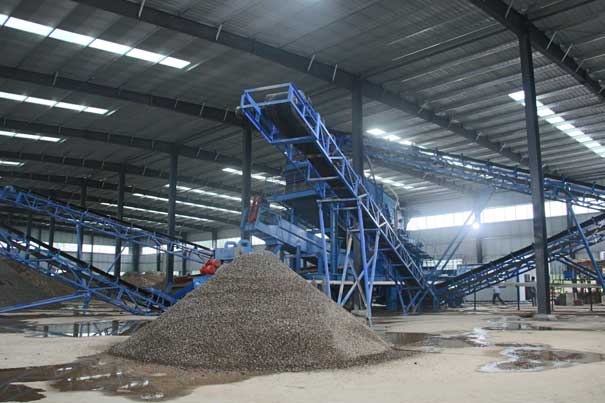Dry sand production is suitable for limestone sand production, and the cost of dry sand production is low. Generally, it is suitable for raw materials with a water content of less than 3%. The main advantages of the dry production process are:
1) The water content of machine-made sand produced by dry sand making is low, generally less than 2%, and commercial mixed and dry mixed mortar can be used directly.
2) The content of stone powder in the finished sand of dry sand making is adjustable and controllable, and centralized recycling can be used comprehensively to reduce dust emissions.
3) There is little or no water in the dry sand production process, which saves water resources and protects the environment.
4) Dry sand making is easy to centralize operation control and realize automatic management.
5) Dry sand making is not affected by drought and cold seasons, and can be produced continuously throughout the year.
Although dry sand production has many advantages, wet sand production still occupies a larger market. The main disadvantages of wet sand production are:
1) Wet sand production consumes a lot of water, and 1 ton of sand and gravel requires water consumption of 2-3.5m;
2) Wet sand production products have high sand water content and must be dehydrated, and dry mixing must be re-dried;
3) The sand fineness modulus of wet sand making products is relatively coarse, and the sand output is low;
4) The wet sand production produces a large amount of mud powder sewage, which pollutes the environment, and the stone powder is not easy to recycle;
5) There are many types of infrastructure investment and equipment for wet sand making, and the production cost of machine-made sand is high;
6) Wet sand production cannot be produced normally in arid and rainless areas or in freezing seasons.
Between wet sand making and dry sand making, there is also a semi-dry sand making process. The semi-dry production process is relatively wet. The biggest feature is to wash off the mud and stone powder on the surface of the sand making material with water, that is, a vibrating screen is used. The extension machine adds water to wash away the mud and stone powder on the raw material, and the finished sand is not washed partly or completely, so the water consumption is relatively small, the loss of stone powder in the finished sand is less, and the water content is lower. However, this sand and gravel production process still requires more water resources, and the sewage treatment device still needs to be equipped, but the specifications are much smaller. The investment cost is less than that of the wet method and more than that of the dry method. The content of the finished sand and gravel powder is between the two, and the operating cost is also between the two.



